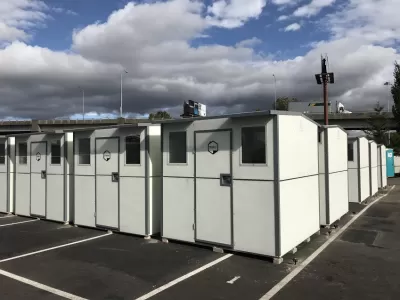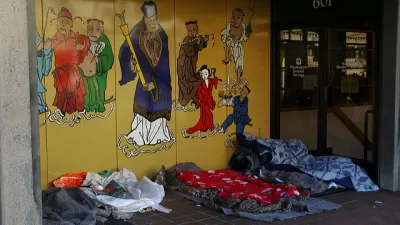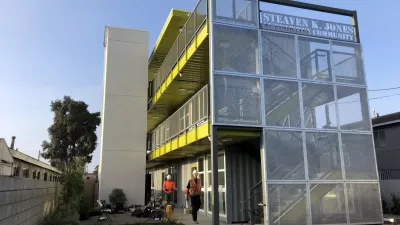Structures initially intended to temporarily house disaster victims are serving a new purpose in Tacoma, Washington—sheltering homeless people and getting them on the path to more permanent housing.

Tacoma, Washington, wanted to provide temporary shelter to homeless people that would be step up from the tent housing the city had offered as part of an effort to address the area’s homelessness crisis. The city started using tiny houses that originally were designed as emergency shelter for disaster victims, reports Hallie Golden:
Created by Pallet, based in nearby Everett, Washington, the small, white rectangular structures are covered from floor to ceiling with a fiberglass material and aluminum framing, and—depending on whether you pick the 64- or 100-square-foot model—can be set up with little to no tools in under an hour. They come with a fold-up bed, windows, a ventilation system, and a front door that locks. In other words, they are an "Ikea approach to shelter," says Amy King, the company’s owner and founder.
The shelters are now used as part of the process in transitioning people off the streets and eventually into more long-term housing. Other cities struggling with similar homelessness crises have expressed interest in using the Pallet structures because they are less expensive and easier and faster to erect than permanent structures.
"[Seattle Council’s Teresa Mosqueda] said she would like to see funding in this year’s budget go to these structures, as long as it’s coupled with supportive services, such as case managers, and funding for more long-term housing," notes Golden.
FULL STORY: These easy-to-build shelters are helping cities quickly provide cover to the homeless

Planetizen Federal Action Tracker
A weekly monitor of how Trump’s orders and actions are impacting planners and planning in America.

Maui's Vacation Rental Debate Turns Ugly
Verbal attacks, misinformation campaigns and fistfights plague a high-stakes debate to convert thousands of vacation rentals into long-term housing.

Restaurant Patios Were a Pandemic Win — Why Were They so Hard to Keep?
Social distancing requirements and changes in travel patterns prompted cities to pilot new uses for street and sidewalk space. Then it got complicated.

In California Battle of Housing vs. Environment, Housing Just Won
A new state law significantly limits the power of CEQA, an environmental review law that served as a powerful tool for blocking new development.

Boulder Eliminates Parking Minimums Citywide
Officials estimate the cost of building a single underground parking space at up to $100,000.

Orange County, Florida Adopts Largest US “Sprawl Repair” Code
The ‘Orange Code’ seeks to rectify decades of sprawl-inducing, car-oriented development.
Urban Design for Planners 1: Software Tools
This six-course series explores essential urban design concepts using open source software and equips planners with the tools they need to participate fully in the urban design process.
Planning for Universal Design
Learn the tools for implementing Universal Design in planning regulations.
Heyer Gruel & Associates PA
JM Goldson LLC
Custer County Colorado
City of Camden Redevelopment Agency
City of Astoria
Transportation Research & Education Center (TREC) at Portland State University
Jefferson Parish Government
Camden Redevelopment Agency
City of Claremont





























